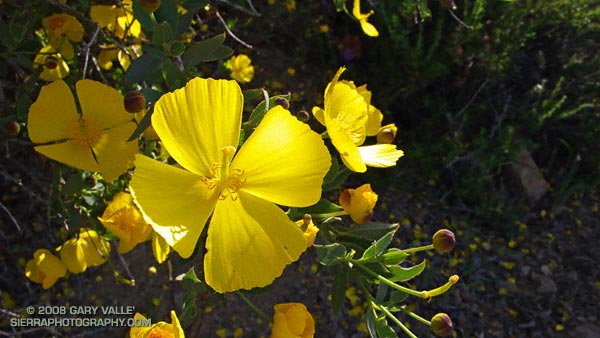
Tree poppy (Dendromecon rigida) on Temescal Ridge Fire Road, on the way to the Hub in Topanga State Park.
From a run in March of the Will Rogers – Temescal Loop in the Santa Monica Mountains.

Tree poppy (Dendromecon rigida) on Temescal Ridge Fire Road, on the way to the Hub in Topanga State Park.
From a run in March of the Will Rogers – Temescal Loop in the Santa Monica Mountains.
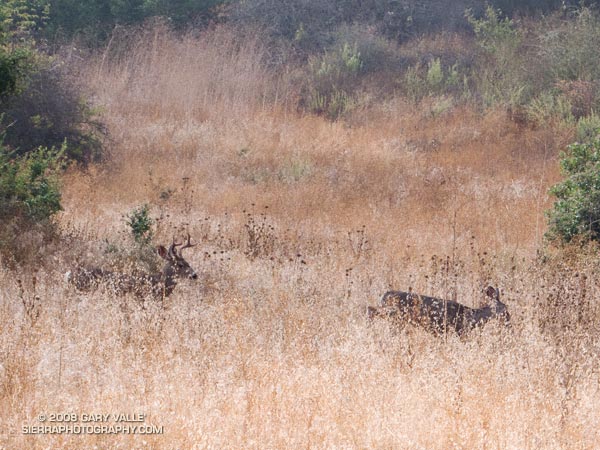
When running in the Trippet Ranch area of Topanga State Park, more often than not, I see mule deer browsing among the oaks along Eagle Springs Fire Road, or along the Musch Meadow Trail.
On Sunday’s Trippet Ranch loop, these deer were near the Musch Meadow Trail. The young buck appeared to be taking more than a passing interest in the doe. The breeding season for mule deer varies widely, and begins as early as mid-September in some locations.
Here is a zoomed view of the doe and buck.
Related post: Musch Trail Mule Deer
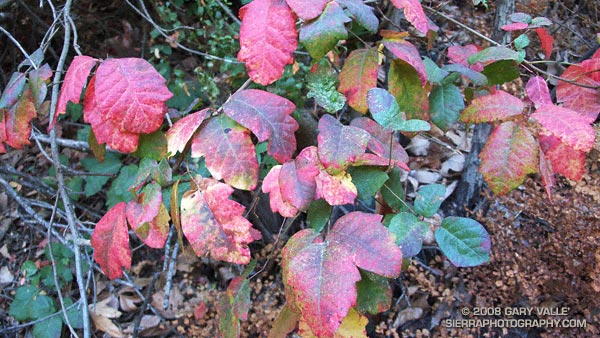
Fall color is not as widespread in chaparral as in some other plant communities. This vividly colored poison oak is along the Garapito Trail in Topanga State Park.
From a run of the Trippet Ranch Loop from Marvin Braude Mulholland Gateway Park at the southern end of Reseda Blvd., in the San Fernando Valley.
Related post: Poison Oak, Ferns Along the Garapito Trail
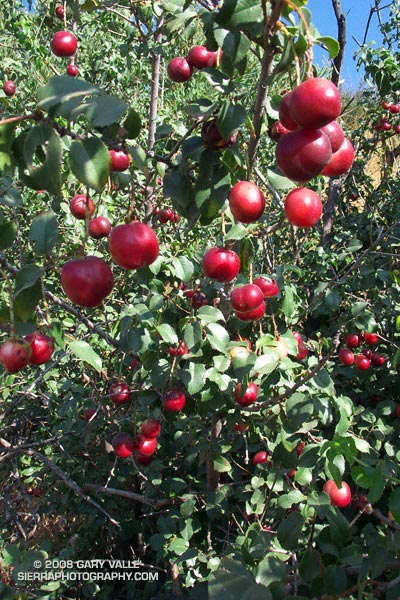
Sometimes growing as large as a supermarket cherry, the sweetish, thin-pulped fruit of hollyleaf cherry (Prunus ilicifolia) is a favorite snack of coyotes.
These are on the Chumash Trail in Rocky Peak Park. This is the first year since the 2003 Simi Fire that there has been a sizable hollyleaf cherry crop along the trail.
It is commonly reported that an “acid treatment” in the digestive tract of a coyote or bird is required for germination. However, according to the University of Texas Native Plant Information Network Native Plant Database, fresh seeds require no treatment.
Related post: Holly-leaved Cherry
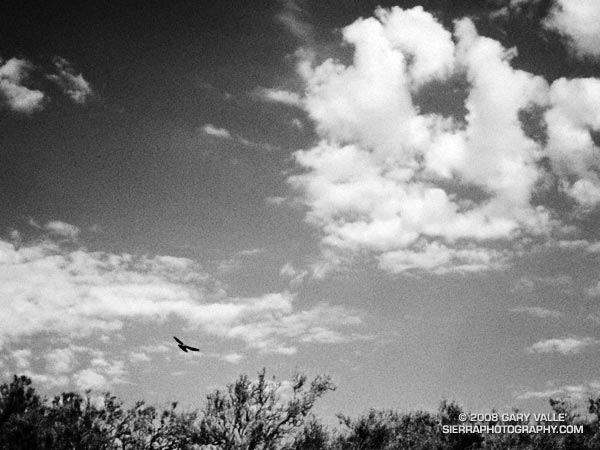
Ka-ree… Ka-ree… Ka-ree…
I heard the angry cries at least a quarter-mile away. The screams were incessant. Running along the dirt road, I emerged from a grove of oaks and turned west — running down a short hill and then up another. Cresting the rise, I paused to search the parched terrain.
The Winter rain season had been the driest on record, and Summer heat was now oppressive, abusing the animals and desiccating the chaparral. A few clouds cluttered the sky, but they would bring no rain. The cries continued.
Ka-ree… Ka-ree… Ka-ree…
The screams seemed to be coming from a group of rocks and oak trees near the campground. I left the road and slowly walked through the brush in the direction of the shrill shrieks. As I approached, the intensity and urgency of the screams increased. Intimidated, I stopped.
KA-REE… KA-REE… KA-REE…
There was not only fury in those cries, but a warning.
To my left, something stirred. Slowly I turned and looked down. For a moment I just stared. Rabbit lay face-down against a rock, twitching. Up in the oak tree, Hawk continued his irate cries.
KA-REE… KA-REE… KA-REE…
Suddenly, there was motion to my right, and Bobcat bolted from the brush. Hawk swooped in pursuit. His broad tail flared and wings twisted one direction and then another, as he followed the abrupt zigs and zags of Bobcat through the rocks, up the hill, and out of view.
KA-REE… KA-REE… Ka-ree… ka-ree…
Afterward: This encounter occurred during a run at Sage Ranch Park in July of 2002. I continued my run, and when I returned about 30-40 minutes later, the rabbit was gone. The photographs were taken during the encounter.
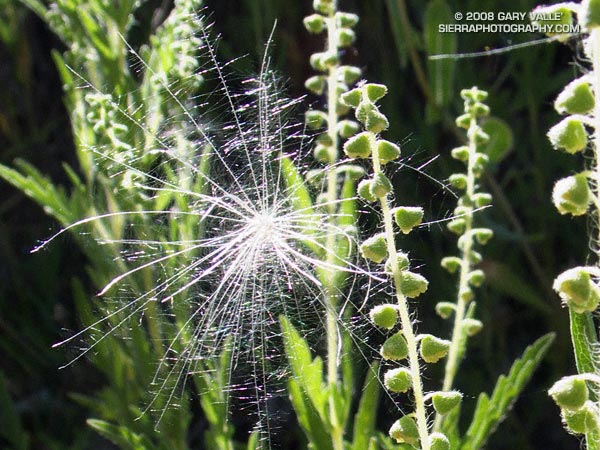
Adjacent to Las Virgenes Creek, not far from the cattails of Linear Green, is a sizable plot of western ragweed. On a recent run I noticed several tufts of fluff caught on the ragweed and backlit by the afternoon sun.
Investigating, I found the source of the tufts about 15 yards away — a patch of bull thistle — an invasive weed that is found throughout the U.S.
Like a dandelion, bull thistle seeds are attached to a downy pappus, and can be dispersed by wind. The rate at which these plumed seeds fall through still air is quite low — less than 1.5 ft/sec. This is slower than the minimum sink rate of a high performance sailplane. For a given plant height, the lower the sink rate, the farther the seed can potentially be dispersed from the parent plant.
Even though the plumed seed of bull thistle (Cirsium vulgare) is much larger and heavier than a dandelion’s familiar tuft, it is reported to have about the same ratio of plume area to seed weight. This is a key factor affecting the sink rate. However, the bull thistle’s seed is reported to sink at about a 15% slower rate than the dandelion’s. This may be attributable to aerodynamic and structural advantages of the secondary branches found in the plume of the bull thistle, but not in the dandelion’s.
Related technical papers:
Diaspore Size, Shape, and Fall Behavior in Wind-Dispersed Plant Species
Glenn R. Matlack
American Journal of Botany, Vol. 74, No. 8 (Aug., 1987), pp. 1150-1160
Botanical Society of America
The Aerodynamics of Plumed Seeds
D. F. Greene and E. A. Johnson
Functional Ecology, Vol. 4, No. 1 (1990), pp. 117-125
British Ecological Society